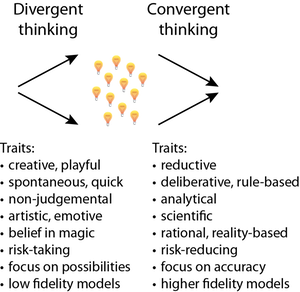Reading
-
Read Chapter 5 in the textbook by Mattson and Sorenson.
-
See the updated Project Planning page on the ME 491 web site
-
Review lecture notes and lecture slides from ME 491 on Concept Selection
Next Assignment
Due on 23 February 2018 28 February 2018: Summarize concept generation and evaluation, with a focus on analysis of
design alternatives. This is the Concept Analysis Assignment.
For this assignment, techniques described in ME 491 Lecture 4 and in this lecture (#4) should be applied to your design.
Announcements
Please designate one person on your team who will submit purchase orders
- Only one person will be able to request MME purchase of items for Capstone projects
- You will need to submit info on a Google form (yet to be created)
- Teams will need to plan ahead
Workbench Planning
- Have a team meeting to discuss space and tool needs.
- After the meeting, have one person complete the online survey on lab/workbench needs for your project
Conceptual Design
With the completion of the Project Contract, teams can begin Conceptual Design phase.
In conceptual design, the broad characteristics of a design solution are explored and ultimately decided. The outcome is a set of specifications for subsystems that, when developed further in the Subsystem Engineering phase, will meet the desirability and manufacturability goals for the project.
Conceptual design is characterized by repeated cycles of idea generation and evaluation. It's important to work efficiently because the team will need to save time and resources for the detailed work in the Subsystem Engineering and Product Refinement phases. However, the team should avoid rushing or treating the Conceptual Design phase superficially because options available in later phases will be confined by decisions made during the Conceptual Design phase.
So how can teams make good Conceptual Design decisions without having access to detailed performance information that will only be available after later stages in the design process? Experience clearly helps, but even the most experienced design engineer cannot predict all of the outcomes of the later design processes. We will discuss and practice tools that help in decision-making during the Conceptual Design phase. We also advocate for rapid iteration and prototype testing. The prototypes used in the Conceptual Design phase are usually simple, sometimes made of cardboard and tape. In other situations, prototypes focus only on subsystems or components to establish performance boundaries and determine whether the subsystems or components can satisfy performance constraints.
Goals of Conceptual Design
See also Table 5.1 in the textbook by Mattson and Sorenson
- Create well-defined subsystems
- What are the subsystems?
- Develop an R-M matrix for each
- Identify interfaces between subsystems and requirements for those interfaces
- Generate many high quality options as possible

-
Use simple models and quick prototypes to evaluate concepts. Do. Not. Guess. Instead, use analysis and experimentation to test
-
Evolve the design
- Identify key risks. See, e.g., TED talk by Astro Teller
- Increase knowledge, reduce uncertainty: Put the big stones in the bucket first
- Update high level concepts as necessary
- Update performance targets in system level requirements matrix
Characteristics of Conceptual Design
-
Focus shifts from defining the problem in Opportunity Development to creating the solution
-
Creativity is very important
- Creativity is always valuable, but is particularly important in Generating ideas
- Analytical and reductive thinking is important in engineering design, but it interferes with the creative process necessary to generate ideas.
- Be aware of, and resist design fixation, i.e., sticking to the first idea that you think might work
-
Rapid iteration
- Explore ideas as fast as possible
- Minimize cost in time, materials, etc. so that many ideas can be explored
- Prototypes can be mock-ups, and may or may not be functional
-
Use system level models: favor simply analytical models over detailed FEA or CFD Example: Slides on development of bodywarmer
-
Use simply geometric models: favor sketches over CAD, favor cardboard over steel
-
Use internal and external search
- Internal search involves ideas generated by the team
- External search involves Internet, competitive benchmarking, surveys, focus groups
Tools and Process of Conceptual Design (some repetition of above list)
- Idea generation tools
- Brainstorming, Brain writing
- Concept Maps
- Working with analogs
- Crawford slip-writing technique
- SCAMPER
- Design Heuristics
-
Concept evaluation tools
- Absolute Filters (Dieter and Schmidt, section 7.3.1; Ullman, section 8.3-8.4
- Feasibility
- Technology readiness
- Go/no-go relative to constraints and performance thresholds
- Concept Screening matrices or Pugh Chart or Decision Matrix (Mattson, pp. 294-295, Dieter and Schmidt, section 7.5, Ullman section 8.5)
- Simple analytical models: overall energy balance, overall force balance
- Build a budget: How to allocate money to subsystems in order to achieve, or reduce risk of not achieving, performance goals
- Prototype testing
- Absolute Filters (Dieter and Schmidt, section 7.3.1; Ullman, section 8.3-8.4
-
Add structure to the conceptual design process
- Identify subsystems
- Functional decomposition: function and energy flow
- Identify dependencies between subsystems
- Once identified, or as you identify subsystems, decide whether to buy versus build
- Develop RM matrices for each subsystem
- Clarify requirements of performance measures from RM matrix in Opportunity Development phase. See Figure 5.1 in the textbook
- Develop unambiguous and quantifiable performance metrics for the subsystems
- Identify subsystems
-
Project planning and management
- Continuously monitor progress and update plans as necessary
- Regularly consult and update Gantt chart
- Create network diagrams to coordinate and set deadlines for tasks with serial dependencies
- Whenever possible, create parallel tasks and assign to subgroups of the team
- Team coordination becomes more important
- Use network diagrams to visualize and plan serial and parallel tasks
- Maintain good communication during meetings and between meetings
- Plan and execute efficient meetings
- Conflict resolution
- Monitor health of the team
- Learn how to disagree and resolve differences
- Accept that your (individual) opinion will not always be followed
- Continuously monitor progress and update plans as necessary
Practice Idea Generation Techniques
Break out into teams
Using Analogs
Fogler et al. (pp. 165-167) describe these steps to solving problems by analogy
- State the problem
- Generate analogies (this problem is like … )
- Solve the analogy
- Transfer the solution to the problem
Folger et al. give the example of solving the problem of designing re-entry vehicles for returning astronauts from space. (p. 165)
In the 1960s, scientists realized they had a problem when they recognized that there was no material available that would survive the high temperatures generated on a space capsul's surface during reentry into the earths atmosphere. Consequently, a government directive was issued: "Find a material able to withstand the temperatures encountered on reentry." By the early 1970s, no one had produce a suitable material that satisfied the directive, yet we had sent astronauts to the Moon and back. How had this achievement been possible?………….
The real problem was, "How can we protect the astronauts upon reentry?" – not "Find a material that can withstand such high temperatures." Once the real problem was determined, a solution soon followed. One of the scientists working on the project asked a related question: How do meteors eventually reach the Earth's surface without disintegrating completely? … This analogy led to the idea of using ablative materials on the outside of the capsule
This YouTube Video (11 min) gives an overview the engineering of reentry phase of Apollo mission. A 10 minute clip from the CBS news archive that gives an additional view of the reentry maneuver including a demonstation of the human actions necessary to follow the reentry protocol. The following clip (10 min) follows the live coverage of the reentry maneuver for Apollo 8, the first aircraft to orbit the moon and return.
Practice:
- Discuss previous Capstone project of how to assist a blind seal at the zoo
- Pick a component or feature of your project
- List analogs to the problems you are trying to solve
- Apply analog solutions to your problems.
Crawford Slip-writing Exercise
This exercise is a variation on brain-writing. Individuals work alone to generate and then rank their ideas. Those ideas are then shared by adding to a group
Working on post-it notes is helpful.
- Distribute post-it notes
- Individuals silently generate ideas for 10 minutes (or whatever)
- One idea per piece of paper
- One sentence idea per note
- Move quickly and do not judge
- Wait until completion of step 2, and then individuals quickly label their
notes with H,M,L along two scales
- High, medium and low (H,M,L) probability of success
- High, medium and low positive impact on the project
- Place notes on grid – no talking until everyone is done
- Look for patterns
- Condense similar notes
- How are nearby ideas related?
- How are ideas that are far away from each other related?
- How can ideas by combined?
- Take pictures before disassembling

References
- Christopher A. Mattson and Carl D. Sorenson, Fundamentals of Product Development, 5th ed., 2017, Brigham Young University.
- George E. Dieter and Linda C. Schmidt, Engineering Design, 5th ed. 2013, McGraw-Hill, New York.
- David G. Ullman, The Mechanical Design Process, 5th ed., 2016, McGraw-Hill, New York
- H. Scott Fogler, Steven E. LeBlanc and Bejamin R. Rizzo, Strategies for Creative Problem Solving, 3rd ed., 2014, Pearson Education.